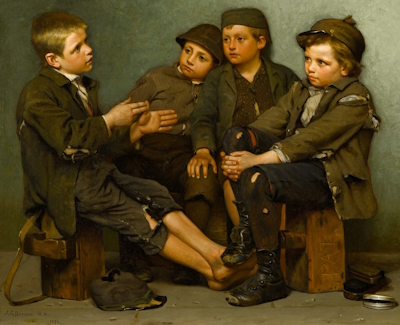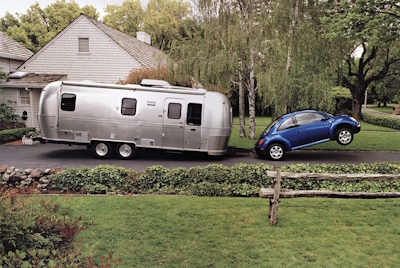It’s simple. It’s the mother of invention. It’s necessity, or, to be exact, the lack of necessity. Before the Industrial Revolution, the world’s slowest, most influential and most damaging revolution, manly men and their womanly wives had to plan their marital relations to coincide with certain moments in the menstrual cycle. They did this because multiple children were necessary to ensure financial success (in part because we had not yet discovered that you can wrap a penis in a thin sheaf of rubber and still have, arguably, barely decent sex). Agriculturally speaking, the more kids you have, the more unpaid farmhands you get. You could also make a few extra bucks through the popular money-making technique of letting your sons and daughters marry outside the family, thus helping ensure a non-mongoloid genetic lineage and generating quick cash by receiving what they should’ve called by its proper name, “Daughter Liquidation,” but did, in fact, call by the more polite and socially-acceptable term, “Dowry.” Look it up. If you were really hard-up and your kids were cute, you could just straight-up sell them. People used to marry for all kinds of reasons, none of which had their own Hallmark card.
So, there humanity was: farming, building houses, tents, and tee-pees, hunting, sewing clothes, storing vegetables for the lean winter months, celebrating when the seasons change under various religio-mystical guises, having to pay up when their daughters got hitched, praying to all kinds of different gods for a good harvest, getting a little cash when their sons got hitched, living, loving, burping, sowing the seeds, harvesting the wheat, farting, telling stories, burning heretics, etc. And then this Industrial Revolution thing happens. It changes everything. We didn’t realize this fact for a while. People still needed to eat, so we still had farms, but ever-so-slowly the basic human unit of farm life, the family, got replaced by the same entity/the same structure that runs the factory, the company. It didn’t dawn on us until much later how much better families are than companies.

It can’t be denied that this Industrial Revolution did bring us some useful advances: the railroad, the telephone, and vastly better sex toys. But, it also brought with it a whole host of negative side effects, many of which took us centuries to even move a few inches over from the “necessary evil” box to the “oh crap, this can’t be good” box. Things like crowded, disease-ridden tenement living quarters, a new breed of overlords not all that different from their predecessors but more obvious, more overtly evil and better able to suppress and torture a wider range of people, corruption which permeated new and exciting territory, the slow death of the idea of the gentleman farmer, the even slower death of the idea of the gentleman at all, and pollution that not only poisoned our air and our lungs but was so bad that it poked holes in one of the layers of protective candy coating that partially shields us from the sun’s radiation. Yeah, this can’t be good.
This Industrial Revolution didn’t stop messing with us there. It could have, but it didn’t. It should have, but alas, it did not. Not content to merely give us assembly lines, soot, and days that involved markedly less goat milking, this Industrial Revolution also changed the very structure of the family itself. In agricultural days families lived together. People were often born, raised, lived, loved, worked and died in the same house. They sometimes built their own houses from largely natural materials and with their own hands, and maybe the help of their unpaid child labor force, but, if so, it was usually just down the road from the house in which they were born. Older people would, if they’d dared to venture outside of their birth home at all, meander home in their waning years to live out the rest of their lives surrounded by their progeny, their grandchildren and great-grandchildren. A few centuries later, once the Industrial Revolution had wormed its way into full-on societal acceptance and convinced us that it dictated the only conceivable and proper way for “civilized people” to live, families started getting smaller and smaller until the point that they often consisted of only two people. Sometimes those two people would create a few more smaller people, but once those new people reached a certain age, it was expected that they, the younger ones, would leave the dwelling place of the original two, or, if they didn’t get the message fast enough, be kicked out of the dwelling place of the original two, and venture out into the world to join the by-this-point-not-so-revolutionary work force and form their own equally small families. The parents didn’t even get dowries.
These small family people would still work, in a way. Their “work” sometimes involved some of the vital activities of the past, like home-building, clothes-building, or nest-building, but, more often than not, was merely a never-ending cycle of repeatedly pushing down little, black, plastic, square buttons and the subsequent storage of the order of those button push downs in small rectangular boxes they called computers {{phonetically— Come — pew — ters}}. Like the families, the computers also got smaller and smaller until they reached a size small enough to fit inside a human pocket, then a human brain (but that’s later, let’s hope, or better yet, not at all).
This Industrial Revolution did lead to a larger variety of ways to spend your “work” day. Eventually, somewhere down the revolutionary road, you could sit behind a counter and sell things to people who thought that by buying this particular thing, they would finally fulfill their destiny, helping them to “be happy,” a phrase that kept being repeated long after humanity had forgotten what it originally meant, much like “family reunion,” “family values,” “family tradition,” “family pride” and most other phrases that included that word held over from a previous era. You could do other entirely meaningless “jobs” as well and still not upset the Industrial Revolutionaries. People remembered that they had to spend their days doing something, and they had a hazy recollection that it should be something that seemed useful, but they’d forgotten exactly what that entailed, and so professional titles like Assistant Manager, Personal Shopper, and Pet Psychologist came storming into the lexicon.
Women, not having to raise ten-to-twelve children, could now work alongside men. They were “beneficiaries,” using the word ironically, of this Industrial Revolution. Women forgot that raising children is the most important thing that anyone of any gender could ever do, and they soon demanded to be equally included in the soul-sucking rituals of the revolution. The overlords of society, sensing a potential doubling of their workforce, quickly complied. Equality was achieved. Now everyone can get screwed over. Yay feminism!

The people, these men and these women, would work, usually following the same basic outline of a work schedule as they did in their pre-revolutionary, farm days. They’d work roughly from sun-up to a little before sun-down, although they forgot why they had to keep this particular schedule since they didn’t necessarily have to do their “work” within that specific time frame anymore. It was just habit. Also it’s easier to sleep when it’s dark. After “work,” these men and women would come home to the likely only other member of their “nuclear family” {{{The Industrial Revolution had become so influential and so important that people often incorporated the absolute worst things to come from it, like nuclear weapons, high-speed internet, and any sex that doesn’t involve actual other people, into their everyday vocabularies. It’s how the Industrial Revolutionaries desensitized themselves to life’s horrors, many of which were, of course, caused by the Industrial Revolution.}}} and talk about how their respective days had been, as if purposefully fooling themselves into thinking that this day had somehow been different from the previous one. As with the hours of the “work day,” talking over the day’s events with one’s family was a hold-over from the pre-revolutionary agricultural days, but, once again, people had forgotten the origins and were simply going through the motions.

Home was often a tiny rectangle, indistinguishable from the thousands of other tiny rectangles surrounding it. But it was still, at that time, allowed to be “individualized” with certain pre-approved purchaseables made in other “work places.” As stated earlier, the people hadn’t yet realized the futility of buying things. It hadn’t dawned on them that buying your way to happiness is as impossible as thumb-wrestling your way to fame or masturbating your way to heaven. Still, the people tried valiantly to recreate the family experience. They “worked.” They came home to their “families.”
Once they reached an age where they were no longer useful to the Industrial Revolutionaries, they “retired.” This meant that they would patiently wait for their chosen mate to expire while indulging in their implanted, long-awaited and formerly impossible, long-suppressed “dreams.” These implanted dreams often took the form of sitting next to a body of water and dangling a prosthetic pole over it in an almost parallel manner in order to theoretically catch fish, which would often be photographed with the catcher, supposedly before being eaten, or, sometimes immediately released to be traumatized, caught and then posed alongside of another day by another “retiree.”

Other “dreams” included operating a dead algae-powered motor vehicle that skims the top of the water at a rapid speed in order to feel the wind rush through what was left of their hair and finally experience “freedom,” another word that was just going through the motions by this point, having long ago lost any actual meaning. A common variation on this particular “dream” involved a large tube-shaped, land-based algae-powered vehicle, driven around the country, with the equally “retired” spouse, in order to “see the world” and collect the territorial-boundary-shaped stickers to prove it. They were allowed to pointlessly indulge in this “dream” for, on average, three to five years, before they were shipped to elderly dormitories, which ironically mirrored the ones in which they had briefly lived while childishly preparing themselves for their lives of “work” and “family” and “fulfillment.”
If these “families” did procreate, and if said offspring was of the male persuasion, once the spawn had reached a societally pre-approved age, they kicked the offspring out of the indistinguishable-from-the-one-next-to-it dwelling, so that he could contribute to the furtherance of the Industrial Revolution by discovering his own “work” and creating his own “family,” again without the aid of a dowry. Later, the same was routinely done to the offspring of the female persuasion as well. The young Industrial Revolutionary would soon, if lucky, move into a dormitory to begin his or her training for an exciting life of predictably pointless usefulness to the Revolution.
Basically, families don’t stick together like they used to because, in this post-Industrial Revolutionary world, they don’t have to, and they’ve long ago forgotten that at some point in history, they actually wanted to.
Luckily for our Industrial Revolutionary overlords, people stopped thinking almost entirely somewhere around 1989. And thank God for it. Do you know how much harder it is to control people who can actually think?
